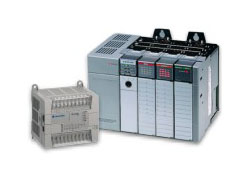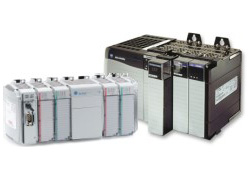
SLC-500 Advanced
(Modules 4-6) $2285.00
Duration: 3 days *This class is scheduled the 2nd week of the month.
Audience: Anyone needing to maintain or program a SLC-500 PLC
Prerequisites: Modules 1-3
Course Outline
Module 4
This module begins with a review of the training demo unit creating a project for use with it. I/O Configuration is covered in depth. The creation of the program routines needed for the class as well as the logic to call them is then presented. Move and word level logic instructions are introduced, followed by the scaling of analog data. The last two lessons are related in that they deal with working with more than a single word of data at a time.
Lessons
- Introduction to the Demo
- I/O Configuration Advanced
- Program Control
- Move and Logical Instructions
- Scale Instruction
- Indirect and Indexed Addressing
- File Instructions
Module 5
This module starts by looking at some miscellaneous math and logic instructions to decode / encode data and deal with the high-speed clock. The communication instructions are then examined to allow peer to peer communications. The STI and DII interrupts are then used, and the module is completed with a review of the shift register instructions.
Lessons
- Miscellaneous Math Instructions
- Communication Instructions
- Selectable Timed Interrupt
- I/O Interrupts
- Shift Register Instructions
Module 6
This module begins by looking at the file diagnostic instructions, then completes the exploration of the file instructions – the FIFO / LIFO and sequencers. The last topic is an introduction to process control and the PID instruction.
Lessons
- FBC and DDT Instructions
- FIFO and LIFO Instructions
- Sequencers
- The PID Instruction
Choose your Location on Map
*This class is scheduled the 1st week of the month.











